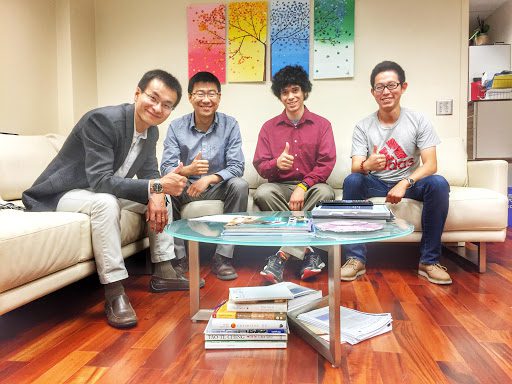Researchers at Berkeley university have recently discovered a new material that could revolutionise energy-saving in homes and other buildings. A form of an active solar panel component has the potential ability of generating electricity, while also having the ability to change its structure to become transparent.
There has been a growing popularity for smart windows. Those that are transparent when it’s dark or cool, and darken when the sun hits them. While not common household gadgets, thermochromic windows have been popular for some time, and their impact on energy saving is notable.
However, these new window panes add a second element of energy saving. The windows have a photovoltaic element. This means that is works as a solar panel too. The energy from the sun absorbed in the window is converted into tangible electricity for the building.
The Discovery

At the Lawrence Berkeley National Laboratory (Berkeley Lab), researchers made this discovery through a form of perovskite. This substance has the ability to work as a photoactive semiconductor material. This material is able to be reversibly switched from a state of transparency to a state of non-transparency, while keeping its electronic properties.
The discovery was made when researchers, led by Peidong Yang, were investigating perovskite’s phase transition.
Yang explained how perovskite “can essentially change from one crystal structure to another when we slightly change the temperature or introduce a little water vapor.”
Therefore, when the material changes crystal structure, its level of transparency changes too.
Moisture also contributes to changing the crystal structure.
The lab team had not set out to create a thermochromic photovoltaic window, however, like many scientific historical discoveries, their mistake turned out to be an amazing innovation.
Solar Panel Windows
The combination of photovoltaic and thermochromic components is important. Traditional solar panels (photovoltaic technology) are opaque, capturing sunlight and using the heat to generate electricity. Windows, on the other hand, do the opposite of capturing, letting the sunlight travel directly through the glass pane.
Therefore, if a window is to double as a solar panel, it needs to somehow absorb light and let it through. If it absorbs too much light, it’s a pretty pointless window, but

if it absorbs too little, the window will not be able to generate sufficient electricity to be cost-effective.
A final product is a long way away, but Yang and his team’s discovery will undoubtedly be the start of a new greener technology for energy saving. They’re main focus now is to uncover how best to trigger the reverse transition to transparency, which they are aiming to do through natural or engineered moisture.
The solar cells have shown no sign of fade or performance degradation, even further demonstrating the impact they could have on solar energy. ‘With a device like this, a building or car can harvest solar energy through the smart photovoltaic window,’ says Yang’s graduate student, Lai.
At Collect & Recycle, we provide solar panel recycling services across the UK. If you are looking to dispose of solar panels safely, get in touch with our team today.


